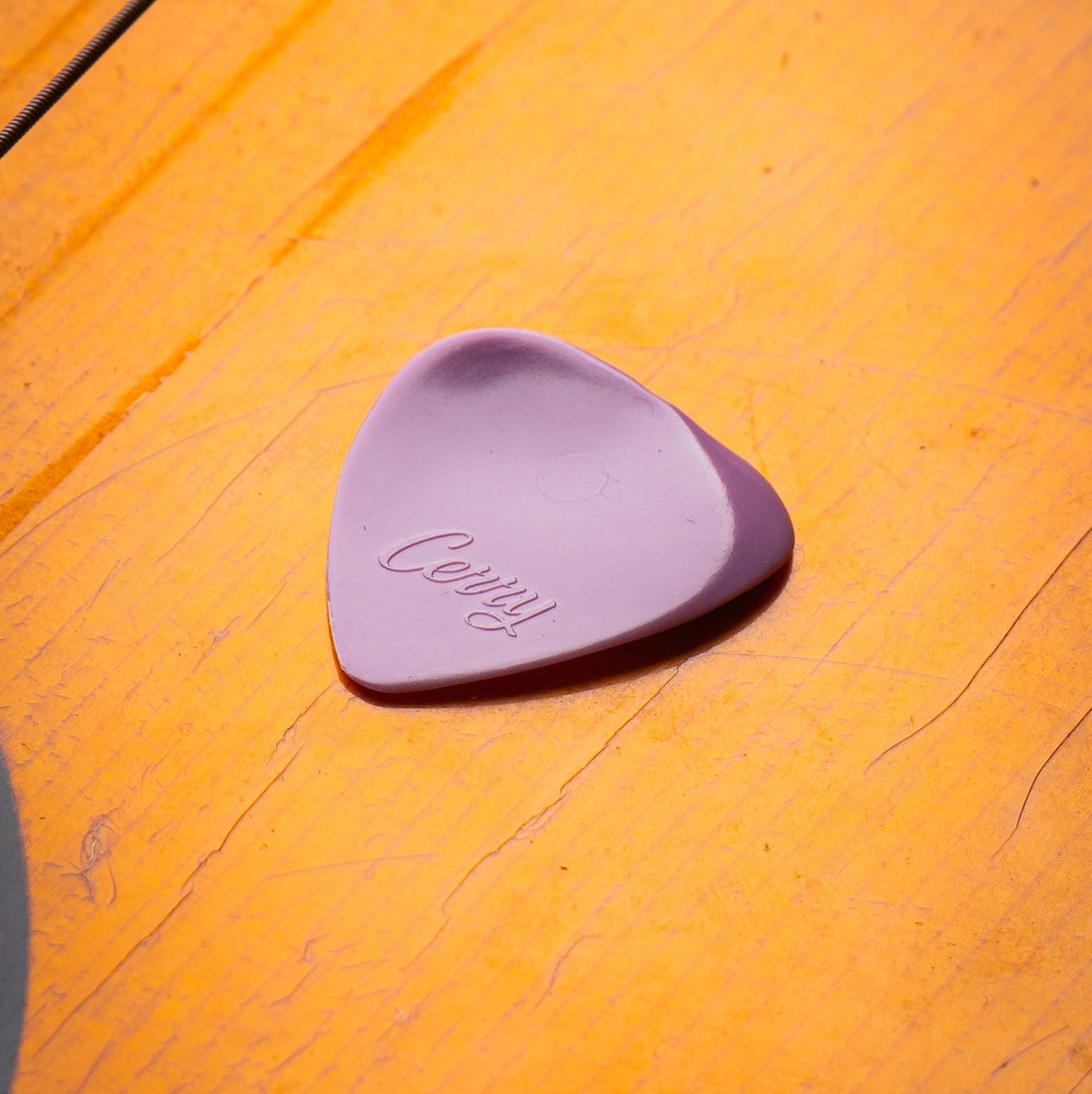
Material: celluloid
Share
Celluloid was one of the first plastic materials synthesized in the laboratory and the first polymer used for mold production.
Over time, its formulation has undergone changes and is still widely used today for various types of objects, including eyeglass frames, medical items, toys, and, in our case, plectrums for string instruments.
Celluloid is a strong and durable material, elastic and unbreakable, but thin celluloid plectrums can break. Additionally, celluloid has poor "shape memory," meaning that if excessively deformed, it does not return to its original shape.
In our case, if we bend a celluloid plectrum, we can damage it.
Celluloid plectrums generally produce a bright and sharp sound, a quality that has made them widely used, and for a long time, celluloid was practically the only material used to make plectrums.
Celluloid is a material that tends to crystallize over time, becoming fragile—a process that can be accelerated by high humidity, although the material itself has excellent water resistance.
Over time, its formulation has undergone changes and is still widely used today for various types of objects, including eyeglass frames, medical items, toys, and, in our case, plectrums for string instruments.
Celluloid is a strong and durable material, elastic and unbreakable, but thin celluloid plectrums can break. Additionally, celluloid has poor "shape memory," meaning that if excessively deformed, it does not return to its original shape.
In our case, if we bend a celluloid plectrum, we can damage it.
Celluloid plectrums generally produce a bright and sharp sound, a quality that has made them widely used, and for a long time, celluloid was practically the only material used to make plectrums.
Celluloid is a material that tends to crystallize over time, becoming fragile—a process that can be accelerated by high humidity, although the material itself has excellent water resistance.
